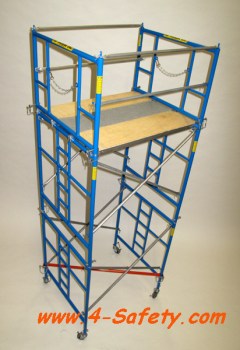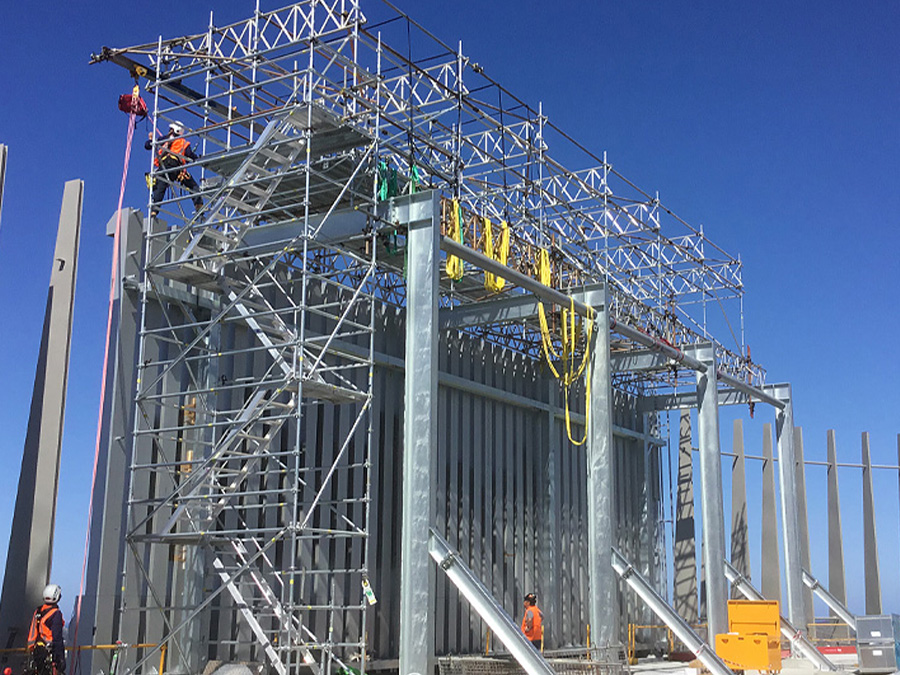Professional Scaffolder Surrey: Your Trusted Partner for Safe Installations
Professional Scaffolder Surrey: Your Trusted Partner for Safe Installations
Blog Article
Checking Out the Numerous Sorts Of Scaffolding Used in Building Projects
The building industry relies heavily on numerous kinds of scaffolding to meet details job demands, each offering distinctive advantages and applications. Conventional framework scaffolding gives a strong structure for basic jobs, while put on hold scaffolding is vital for work on high-rise structures.

Typical Structure Scaffolding
Typical structure scaffolding is just one of the most commonly utilized methods in the building market as a result of its toughness and convenience. This system includes horizontal and vertical frames that are assembled to develop a stable system for workers and materials. The primary components consist of upright posts, horizontal journals, and angled dental braces, which with each other supply a strong structure that can sustain substantial lots.
Among the vital benefits of conventional frame scaffolding is its versatility to various building tasks, varying from household structures to large commercial structures. The modular layout permits for easy setting up and disassembly, making it reliable for both short-term and long-lasting tasks. Furthermore, the system can be customized in height and width, accommodating various structure styles and site conditions.
Safety and security is critical in scaffolding applications, and standard frame systems are equipped with guardrails and toe boards to stop drops and make sure employee security. Regular assessments and adherence to safety and security policies are vital in maintaining the stability of the scaffold (Scaffolding). In general, standard frame scaffolding continues to be a fundamental option in the building industry, offering a dependable system for labor and improving general job effectiveness

Suspended Scaffolding
Put on hold scaffolding provides an unique solution for construction tasks that need access to raised surface areas, especially in situations where typical structure scaffolding might be unwise. This type of scaffolding is usually put on hold from the roofing system or top levels of a framework, making use of a system of platforms, wheels, and ropes to produce a functioning area that can be adjusted to various elevations.
One of the main advantages of put on hold scaffolding is its flexibility. It can be easily rearranged or reduced to accommodate adjustments in construction needs, making it excellent for jobs such as window installation, frontage work, and upkeep on skyscraper structures. In addition, the marginal footprint of put on hold scaffolding permits better usage of ground space in city settings, where space is often minimal.
Security is a vital factor to consider in making use of put on hold scaffolding. Correct rigging and securing systems must be utilized to ensure security and avoid mishaps. Operators must additionally be trained in the risk-free usage of this tools. Overall, suspended scaffolding provides a efficient and effective remedy for accessing hard-to-reach areas in different building situations, enhancing both efficiency and safety on website.
System Scaffolding
System scaffolding, usually concerned as a modern-day service in the scaffolding market, is composed of pre-engineered elements that can be promptly put together and adapted for different construction tasks. Scaffolding. This kind of scaffolding is characterized by its modular style, which permits for adaptability and efficiency on job websites, fitting different elevations and architectural needs
Generally made from high-strength steel or light weight aluminum, system scaffolding uses boosted durability and stability. The parts consist of upright posts, straight journals, and angled dental braces, which interconnect firmly, making sure a robust structure. The layout usually includes standardized fittings, simplifying assembly and disassembly processes, thereby decreasing labor time and costs.

Rolling Scaffolding
Rolling scaffolding is a flexible alternative to typical set scaffolding, created for mobility and convenience of usage on construction sites. This kind of scaffolding includes a platform supported by frames with wheels, enabling employees to conveniently relocate it as required. The mobility function considerably enhances productivity, as it decreases downtime connected with taking apart and assembling repaired scaffolding.
Usually built from light-weight products such as light weight aluminum or steel, rolling scaffolding supplies a sturdy yet portable service for tasks needing regular repositioning - Scaffolding. It is especially helpful in tasks such as paint, drywall setup, and electrical job, where access to various heights and places is essential
Safety is vital in rolling scaffolding style, with attributes such as locking wheels to protect against unplanned motion when being used, and guardrails to secure workers from drops. Additionally, lots of models are flexible in height, accommodating numerous project needs.
Cantilever Scaffolding

The style of cantilever scaffolding generally includes making use of brackets or arms anchored to a structure or framework, enabling the platform to prolong exterior safely. Safety and security is extremely important; thus, these scaffolds should be engineered to visit this website endure ecological conditions and various tons. Regular assessment and maintenance are vital to ensure structural integrity and employee safety and security.
Cantilever scaffolding is preferred for its convenience and efficient use of room, making it a popular selection in city settings where space constraints prevail. In addition, it promotes easier accessibility to high elevations, ultimately adding to the general efficiency of construction projects. As with all scaffolding kinds, correct training and adherence to security requirements are important for workers using cantilever scaffolding.
Final Thought
Finally, the varied kinds of scaffolding made use of in building and construction jobs each offer unique purposes tailored to details site needs. Traditional framework scaffolding offers security, while suspended scaffolding offers flexibility for raised tasks. System scaffolding assists in fast setting up, and rolling scaffolding enhances wheelchair for varying workplace. Cantilever scaffolding efficiently attends to barriers in urban settings. Understanding these scaffolding types is essential for enhancing safety and security and performance in building, inevitably adding to the successful conclusion of jobs.
Conventional framework scaffolding supplies a tough foundation for basic jobs, while put on hold scaffolding is essential for job on skyscraper frameworks.Rolling scaffolding is a versatile alternative to standard fixed scaffolding, designed for wheelchair and ease of usage on construction sites. As with all scaffolding types, proper training and adherence to security standards are crucial for workers making use of cantilever scaffolding.
Traditional framework scaffolding supplies security, while put on hold scaffolding provides convenience for raised jobs. System scaffolding promotes fast setting up, and rolling scaffolding improves flexibility Clicking Here for differing job environments.
Report this page